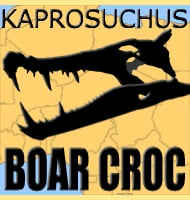Ekrixinatosaurus
In Depth To date Ekrixinatosaurus is without doubt one of the largest abelisaurid theropods that we currently know about, and even at the lower estimate of ten meters long, Ekrixinatosaurus was still bigger than the far more famous Carnotaurus which at the time of writing seems to have had a maximum size of nine meters … Read more
